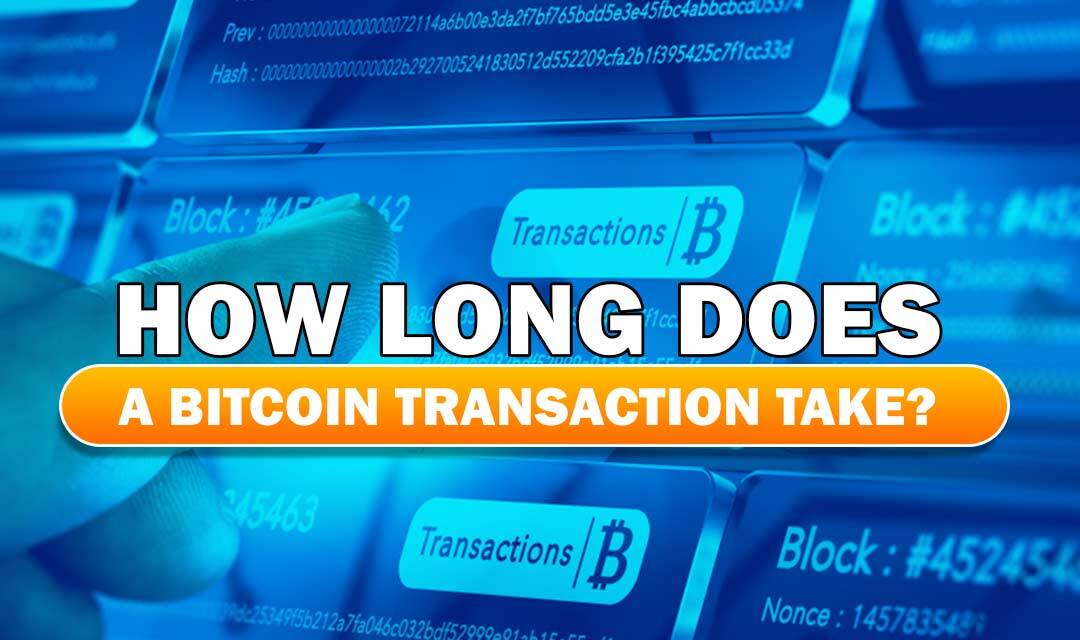Subscribe
"Unlock exclusive insights and elevate your financial wisdom with NetWorth.com — subscribe now to stay ahead in the wealth game!"

Bitcoin (BTC) is by far one of the largest blockchains in terms of market capitalization, appeal, and general popularity.
It was one of the first networks to solve the double-spending issue that plagued digital currencies prior to its point of creation, and it achieved this through the utilization of Proof-of-Work (PoW) as a consensus mechanism,
But with so many transactions taking place on a daily basis, every single day, throughout the entire year, with no breaks, many have wondered how long a Bitcoin transaction actually takes to complete.
Today, we are going to be jumping into everything you need to know when it comes to Bitcoin transactions.
On the Bitcoin network, the typical confirmation time for a payment made through the usage of the BTC cryptocurrency is about 10 minutes. However, the transaction times can vary.
This is affected by a variety of different factors, including the total network activity, hashrate, and transaction fees. At points in time when the network gets really congested, there will be a backlog of transactions within the mempool, where users would need to pay more in transaction fees in order to verify their transactions a lot more quickly.
A mempool is stored temporarily on each individual node that forms the network. A mempool is essentially this record of transactions that are placed within the Bitcoin network, however, ones that a miner has not validated. These have not been added to the next block on top of a blockchain.
These transactions get periodically cleared at points in time when new blocks are added to the blockchain, and the pending transactions that wait in the mempools are only processed when they meet the minimum transaction fee which is required.
Those that decide to pay low fees will typically need to wait a lot longer than those who paid high network fees in order to get processed and then confirmed.
Whenever a user of the Bitcoin network conducts a transaction, they need to pay the network a fee as a means of incentivizing the miners on the network to include their transaction within the next block. This can be really expensive at points in time; then the aforementioned mempool gets filled.
Due to the size limit associated with each block that gets added to the chain to form the blockchain, there is only a limited number of transactions that can get confirmed and then added to each block by the miners. This means that users will need to pay much higher fees in order to get it completed quickly.
Whenever a new transaction gets verified and then included within a new block, it counts as a single confirmation.
This has an average span of 10 minutes, after which another block is created with the transactions, which will count as two confirmations. There are specific services out there that only require a single confirmation, while others might require three or more BTC confirmations, such as cryptocurrency exchanges.
A Bitcoin transaction will typically go through multiple confirmations on the blockchain prior to getting cleared fully, and this is due to the fact that there is a risk that unconfirmed transactions could get reversed or that the cryptocurrency could be spent twice.
A confirmation occurs whenever a block gets created. When a user ends up transmitting a large number of cryptocurrencies to another wallet, these transactions might require up to six confirmations, and if one confirmation takes 10 minutes, this would require 60 minutes to confirm. Each block can, on average, store 2,000 transactions.
Every single time a user ends up sending a transaction, they are making a transfer of cryptocurrencies from one cryptocurrency wallet to another cryptocurrency wallet, which means that they have to wait until the transfer is confirmed by the miners each time.
To check if miners have verified a Bitcoin transaction, users can utilize blockchain explorers.
Bitcoin has seen numerous scaling solutions that have had the primary objective of increasing the speed at which transactions get confirmed. For example, there was the creation of the Lightning Network, which aims to solve the issue by adding another layer on top of the Bitcoin blockchain and introducing the capability of micropayments that can be cheap and quick.
However, there were numerous other altcoins and alternative blockchains developed to tackle the lack of scalability and throughput found in Bitcoin as well, such as Cardano (ADA) and Solana (SOL) as an example.
Hopefully, now you have a higher level of understanding and a broader perspective about the Bitcoin transaction times and the method through which they are confirmed and added to the blockchain.
The best way to speed up transactions is to essentially pay a higher transaction fee, as these slow transaction times are a result of the network’s underlying architecture and design, and it will likely take a major upgrade to the network to change this, assuming that ever occurs.
Whenever you submit a Bitcoin (BTC) transaction with low fees, you run the risk of essentially having your payment sit in a long list of unconfirmed transactions, as miners will prioritize those that have paid a high transaction fee; however, the transaction will eventually get confirmed as the network will not always be congested, and as a result, miners will not always have high-paying transactions to confirm.